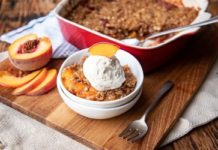Q. How much fiber do adults need? What does fiber do, anyway?
A. You hear it all the time. "Most Americans don’t get enough fiber in their diets." But what does it mean? How much is enough and why is it so important? What’s it good for?
 ©2007 Publications International, Ltd. Choose foods that are high in dietary fiber like the ones above. |
A high-fiber diet has been linked to a multitude of health benefits. It can lower blood cholesterol levels, which may decrease your risk of heart disease and stroke, and it may reduce the risk of colon and rectal cancers.
Most importantly for people with diabetes, it triggers less of a rise in blood glucose levels than other nutrients because fiber slows the digestion of food allowing blood glucose levels to rise more slowly.
Fiber also fills you up! Fiber actually takes up more space in your stomach and small intestine so you may eat less and feel full longer — a real benefit if you are trying to lose weight.
Most experts suggest getting 20 to 35 grams of fiber a day. If you are not eating that much now (and chances are you’re not, as most people get only 10 to 15 grams a day), work slowly up to that amount to minimize any discomfort from your digestive system. Also, be sure to drink plenty of water. Fiber can’t do its job without it — so, drink at least 8 (8-ounce) glasses a day.
Q. Where can I find fiber?
A. You’ve probably heard it before: Fiber is found in fruits, vegetables and whole grains, the same foods that provide us with many of the vitamins and minerals we need for good health. Actually, it is pretty easy to sneak some fiber into almost any meal or snack.
- Breakfast: It’s tough to eat enough fiber if you don’t start early in the day. Try a high-fiber cereal (read the labels and find one with at least 5 grams per serving). Raisin Bran cereal is a great choice with 8 grams of fiber per serving. Add some raspberries or strawberries to your cereal or eat an apple or pear with it and you’ve got one third of the daily requirement. Any whole fruit has more fiber than juice. So, if you are really craving a fruity drink, put the fruit in a blender (leave the edible skins on), add some ice cubes and water or yogurt to make a smoothie.
- Lunch: Use whole wheat bread instead of white when making sandwiches (read the labels and be sure the first ingredient is whole wheat flour). Add a salad with lots of veggies or some steamed veggies. Beans and lentils are also very high in fiber and have enough protein to prevent that mid-afternoon slump.
- Dinner: Whenever possible, select whole grains rather than processed (brown rice instead of white, barley and whole wheat pasta ) and leave the edible skins on fresh fruits and vegetables, as they are an excellent source of fiber.
- Snack: Popcorn, whole grain crackers, vegetables with dip, hummus with red pepper slices or even another bowl of that bran cereal can help boost your fiber intake over the top.
Here are some great ideas for getting meeting your daily fiber intake:
| Food |
Fiber |
| 1 medium baked potato | 5 grams |
| 1/2 Cup Fiber One® Cereal | 13 grams |
| 1 pear | 4 grams |
| 1 cup lentil soup | 14 grams |
| 1 medium orange | 3 grams |
| 1 cup strawberries | 4 grams |
| 3 cups popcorn | 4 grams |
| 3/4 cup oatmeal | 3 grams |
For more helpful information on fiber, see:
- Fiber
- Soluble vs. Insoluble Fiber
- Carbohydrate Basics: The Importance of Fiber
- Foods that Lower Cholesterol: How Dietary Fiber Lowers Cholesterol







































